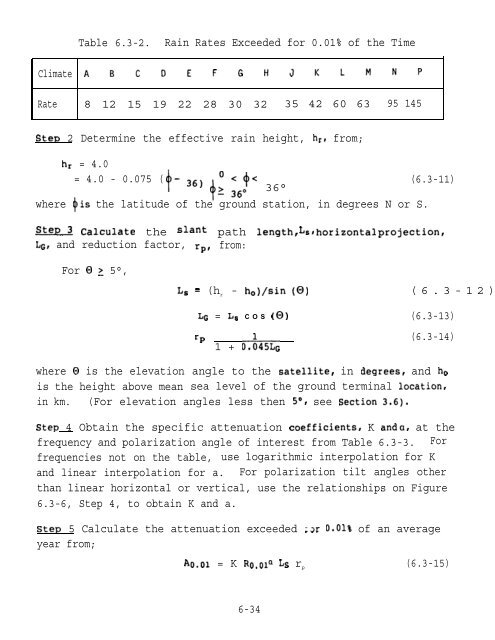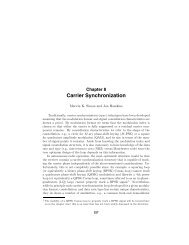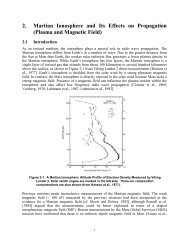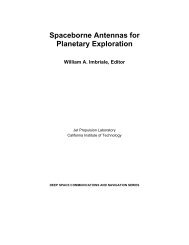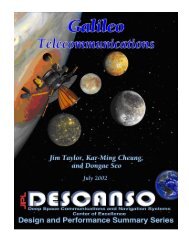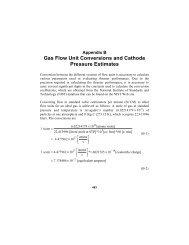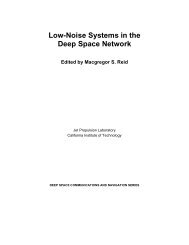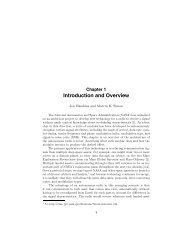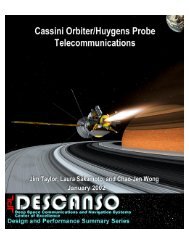Propagation Effects Handbook for Satellite Systems - DESCANSO ...
Propagation Effects Handbook for Satellite Systems - DESCANSO ...
Propagation Effects Handbook for Satellite Systems - DESCANSO ...
Create successful ePaper yourself
Turn your PDF publications into a flip-book with our unique Google optimized e-Paper software.
Table 6.3-2. Rain Rates Exceeded <strong>for</strong> 0.01% of the Time<br />
Climate ABCDEFG HJKLMNP<br />
Rate 8 12 15 19 22 28 30 32 35 42 60 63 95 145<br />
SteR 2 Determine the effective rain height, hr, from;<br />
hr = 4.0<br />
= 4.0 - 0.075 (<br />
+- 361 +: j6~< 36°<br />
(6.3-11)<br />
where $is the latitude of the ground station, in degrees N or S.<br />
W Calculate the slant path length? h~ horizontal Projection<br />
LG, and reduction factor, rpr from:<br />
For @ ~ 5°,<br />
= (h r - hO)/sin (@) (6.3-12)<br />
LG = L~ COS (@) (6.3-13)<br />
rp (6.3-14)<br />
1 + 0.~45LG<br />
where @ is the elevation angle to the satellite~ in degrees~ and ho<br />
is the height above mean sea level of the ground terminal location~<br />
in km. (For elevation angles less then 5°~ see Section 306).<br />
Step 4 Obtain the specific attenuation coefficients~ K anda, at the<br />
frequency and polarization angle of interest from Table 6.3-3. For<br />
frequencies not on the table, use logarithmic interpolation <strong>for</strong> K<br />
and linear interpolation <strong>for</strong> a. For polarization tilt angles other<br />
than linear horizontal or vertical, use the relationships on Figure<br />
6.3-6, Step 4, to obtain K and a.<br />
Step 5 Calculate the attenuation exceeded lar 0.01% of an average<br />
year from;<br />
Ao,o1 = K Ro.01~ LS r p (6.3-15)<br />
6-34


